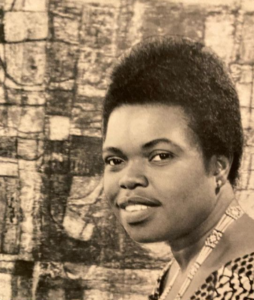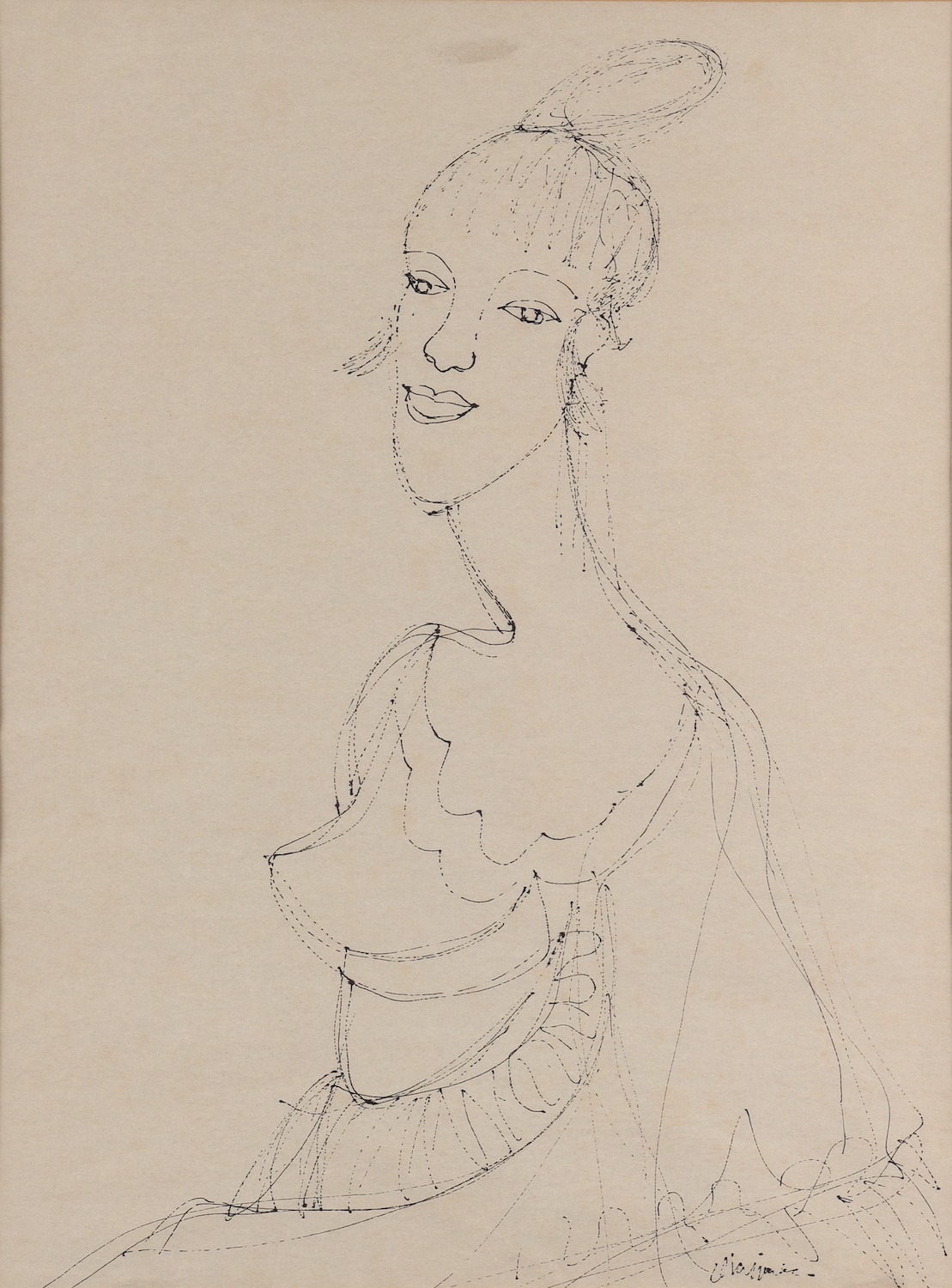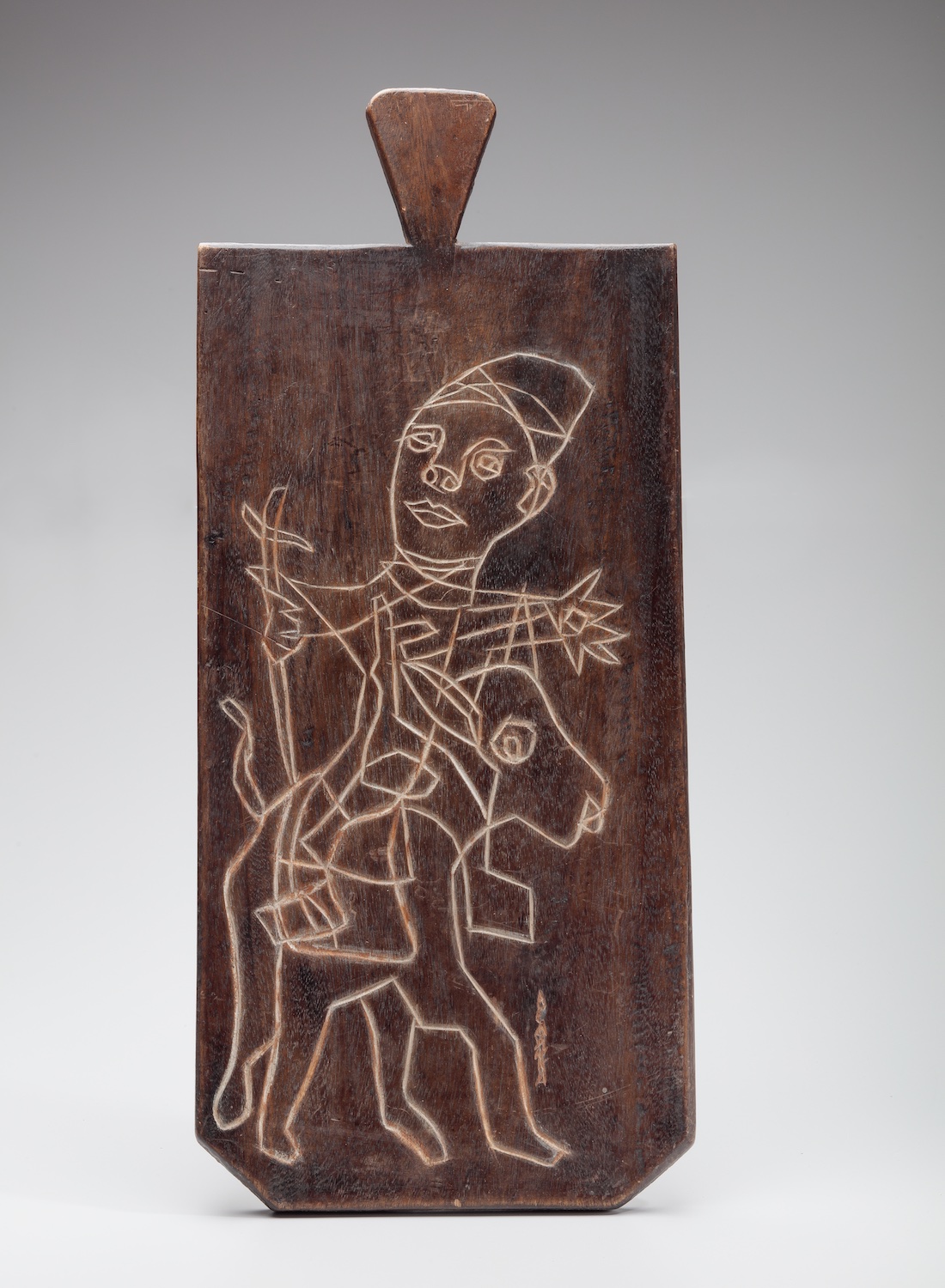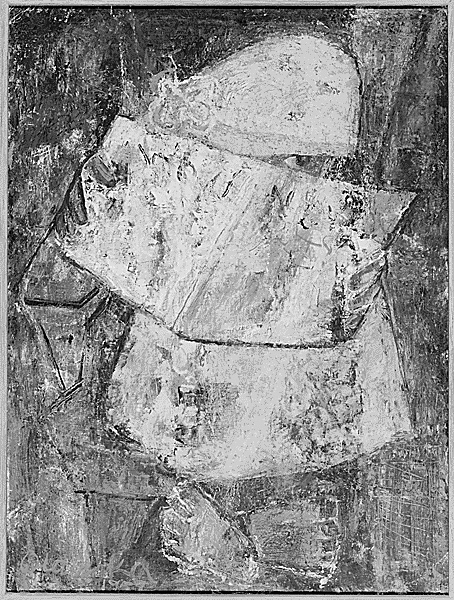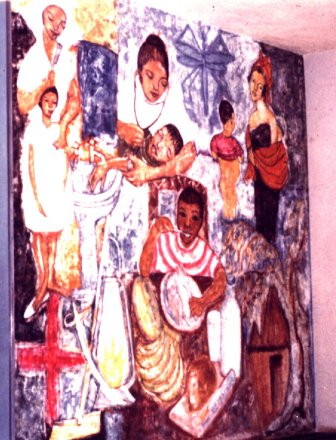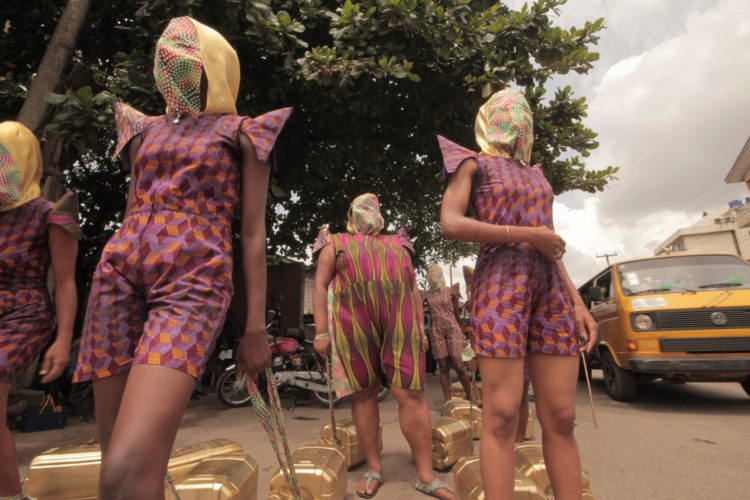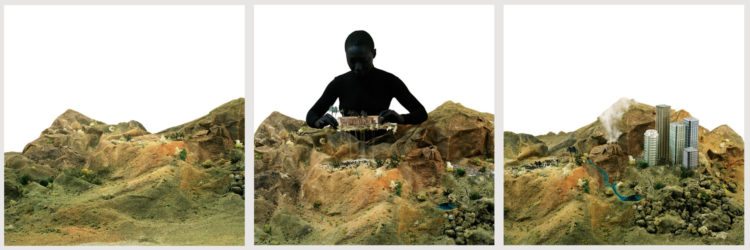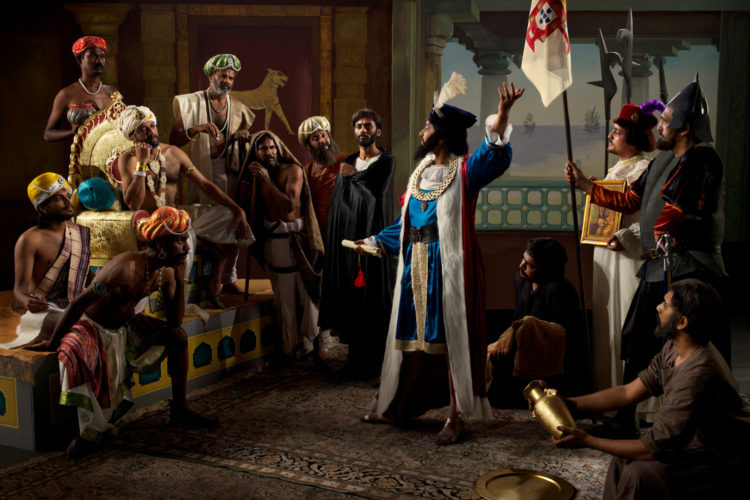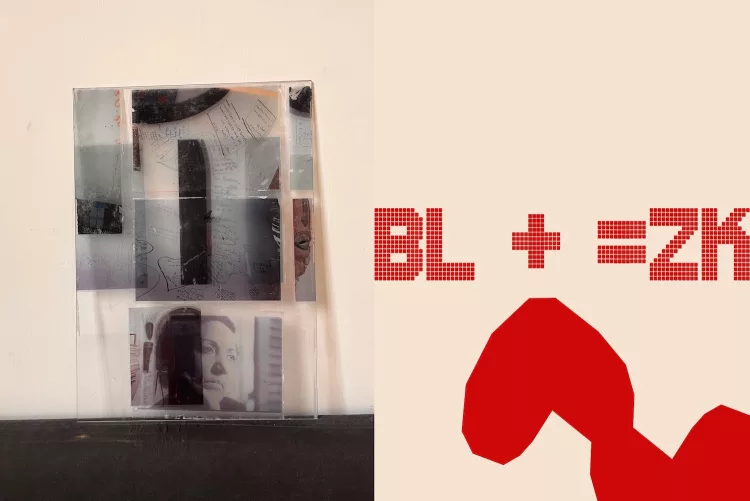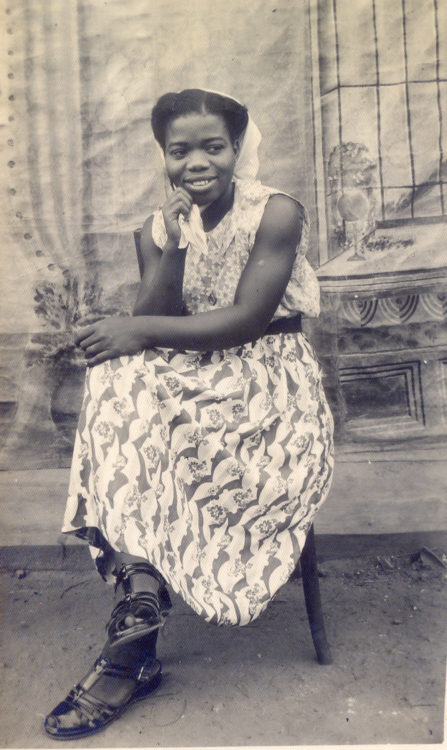« Olayinka » Miranda Burney-Nicol
Lathrop, Perrin, African Modernism in America, New Haven, Yale University Press, 2022
→Ottenberg, Simon, Olayinka: A Woman’s View: the Life of An African Modern Artist, Trenton, Africa World Press, 2014
Sankofa: Constructing Modern African Art, Hampton University Museum, Summer 2024
→African Modernism in America, The Phillips Collection, Washington, October 2023–January 2024
→Olayinka Burney-Nicol, Yusuf Grillo, Mwariko Omari, Commonwealth Institute Art Gallery, London, July 1972
Sierra Leonean interdisciplinary artist.
“Olayinka” Miranda Burney-Nicol hailed from a Krío [creole] family in Freetown, Sierra Leone and discovered her innate passion for art at an early age. She was adroit in various media such as painting, drawing, performance and fashion design, and emerged as a versatile modern artist. Her artistic vision was profoundly shaped by her experiences growing up as a Krío during colonial times. Despite being raised in an environment that often devalued indigenous African cultures, O. Burney-Nicol’s exploration of her own heritage and Sierra Leone’s cultures ignited her fervour for researching and incorporating African Art into her works.
Between 1949 and 1958, O. Burney-Nicol embarked on a transformative journey to the US and Europe, supported by scholarships from bodies like the American Council on African Education. She pursued her artistic studies at Long Island University (Brooklyn, New York), Ball State Teachers College (Muncie, Indiana) and at the New School for Social Research in New York. During her time in New York, O. Burney-Nicol collaborated closely with prominent African American figures like Harry Belafonte and Sidney Poitier at the Harlem Negro Theater. She later moved to London, where she further honed her skills, receiving a scholarship to study painting at the Central School of Arts & Crafts. Her travels to Spain, Italy, and France during this period broadened her artistic horizons, leading her to experiment with oil painting.
Upon her return to Sierra Leone, O. Burney-Nicol continued to thrive professionally. She was briefly married, becoming a mother to her only son, Eddie Davies, while maintaining her career as the lead artist for the Sierra Leone Ministry of Education. In particular, she played a pivotal role in designing Sierra Leone’s national flag as the country approached independence. Her artistic prowess garnered recognition, earning her first prize in the British Council Group Exhibition in 1958. Transitioning from her role with the government, O. Burney-Nicol established the Olayinka Art Studio, where she delved into various artistic forms, blending traditional African materials with Western influences. She developed her distinct style of oil paintings, printmaking and carvings on prayer boards, even coining the term “Wallasilk” to describe her silk pieces mounted on Islamic “Wallah” prayer boards. Her works gained international acclaim, with pieces acquired by esteemed institutions including the Harmon Foundation Collection in New York.
From the 1960s until the mid-1990s, O. Burney-Nicol continued to push artistic boundaries, exhibiting her works at home and abroad. Her major solo exhibitions included showcases in London and Bonn. Despite her death in 1996, her artistic legacy endures, with some of her works being housed in US collections such as the Newark Museum of Art. Her contributions to African modernism have been celebrated in exhibitions, including African Modernism in America (2023–2024) at the Phillips Collection and Sankofa: Constructing Modern African Art (2024) at the Hampton University Museum. Through her pioneering spirit and unwavering dedication to her craft, O. Burney-Nicol remains an icon of African modern art, inspiring generations to come.
A biography produced as part of the project Tracing a Decade: Women Artists of the 1960s in Africa, in collaboration with the Njabala Foundation
© Archives of Women Artists, Research and Exhibitions, 2024


